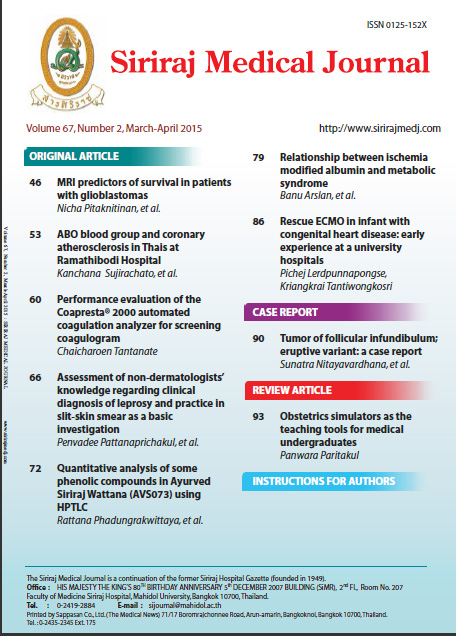Obstetrics Simulators as the Teaching Tools for Medical Undergraduates
Abstract
The use of simulation-based learning has been widely adopted in medical undergraduate training. This article aims to review the effectiveness and feasibility of obstetric simulators which are suitable for undergraduate teaching. For teaching procedural skills on episiorrhaphy, the sponge model is as effective as the beef tongue model but is more feasible. The commercial episiorrhaphy model is less suitable due to their high cost and high maintenance. The simple birthing pelvis is as effective as the full body obstetrics manikin in teaching simple vaginal birth. The use of cervical dilatation simulators and pregnant abdomen simulators still lacks evidence to support their effectiveness and their use may be limited only to the medical schools where clinical contact with the pregnant patients is restricted. Apart from considering the cost – effectiveness of each simulator, each medical school must also choose the simulators that suit the learning objectives and the needs of their context individually.
Keywords: Simulation, simulator, obstetric education, medical education
Downloads
Published
How to Cite
Issue
Section
License
Authors who publish with this journal agree to the following conditions:
Copyright Transfer
In submitting a manuscript, the authors acknowledge that the work will become the copyrighted property of Siriraj Medical Journal upon publication.
License
Articles are licensed under a Creative Commons Attribution-NonCommercial-NoDerivatives 4.0 International License (CC BY-NC-ND 4.0). This license allows for the sharing of the work for non-commercial purposes with proper attribution to the authors and the journal. However, it does not permit modifications or the creation of derivative works.
Sharing and Access
Authors are encouraged to share their article on their personal or institutional websites and through other non-commercial platforms. Doing so can increase readership and citations.











